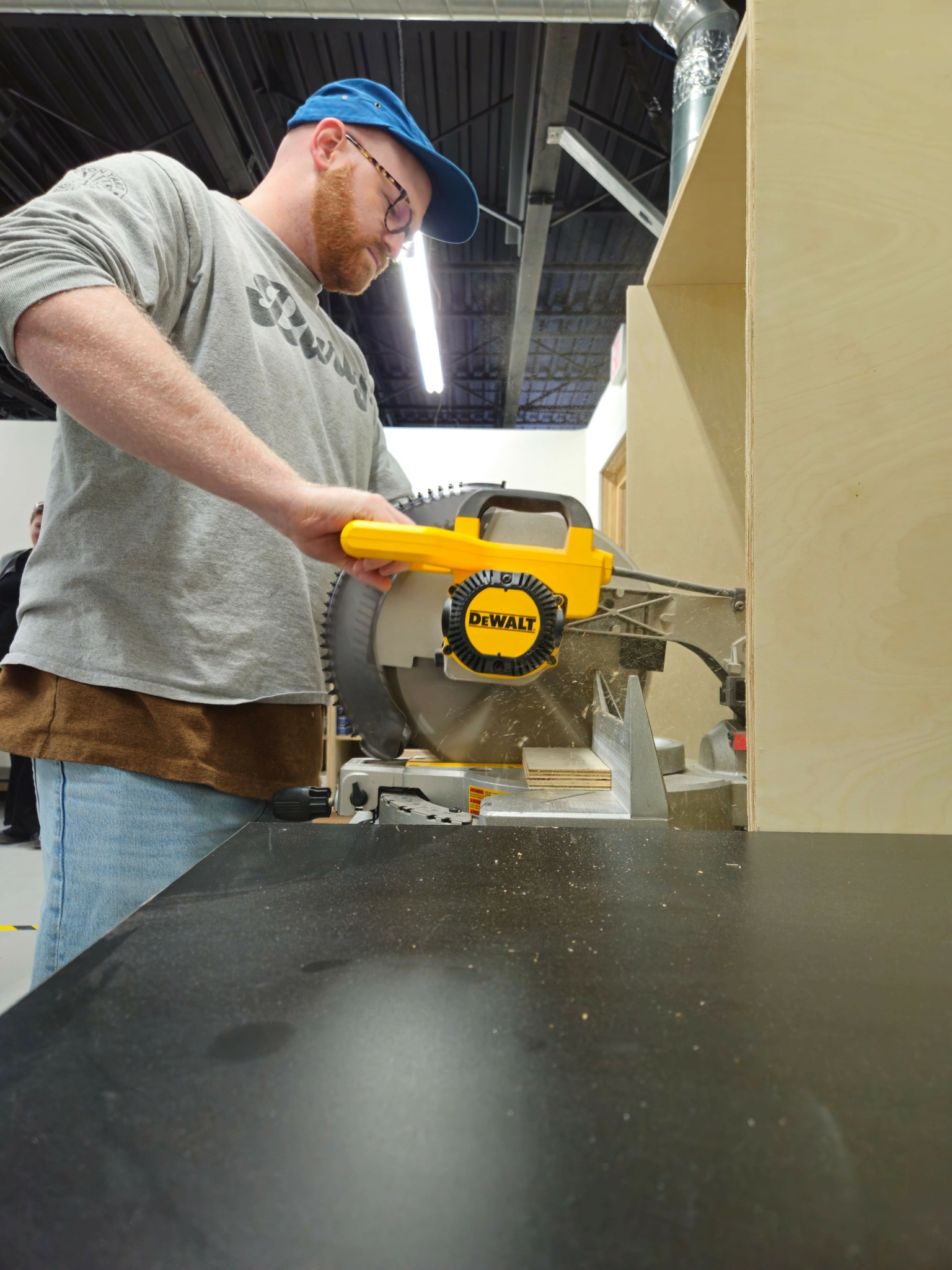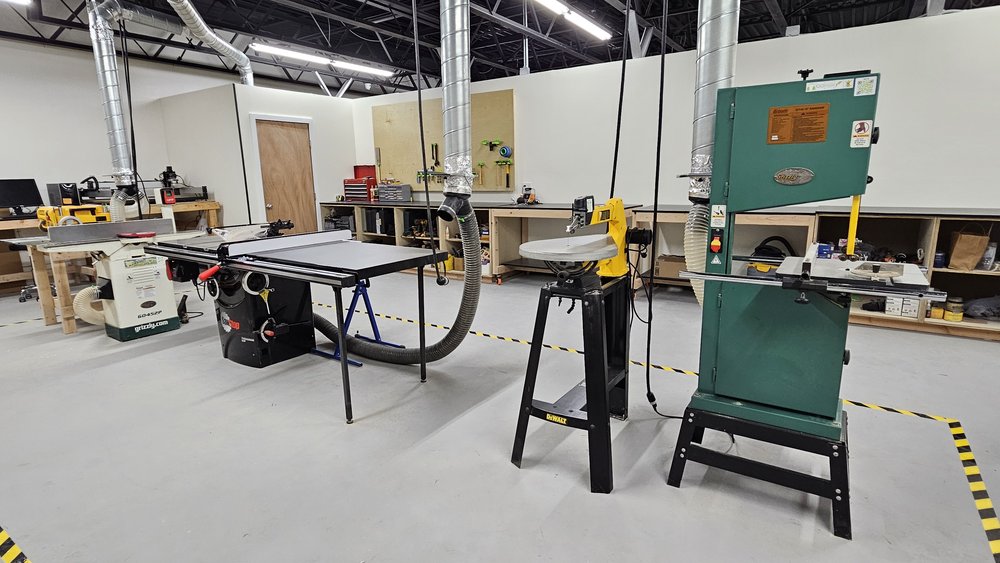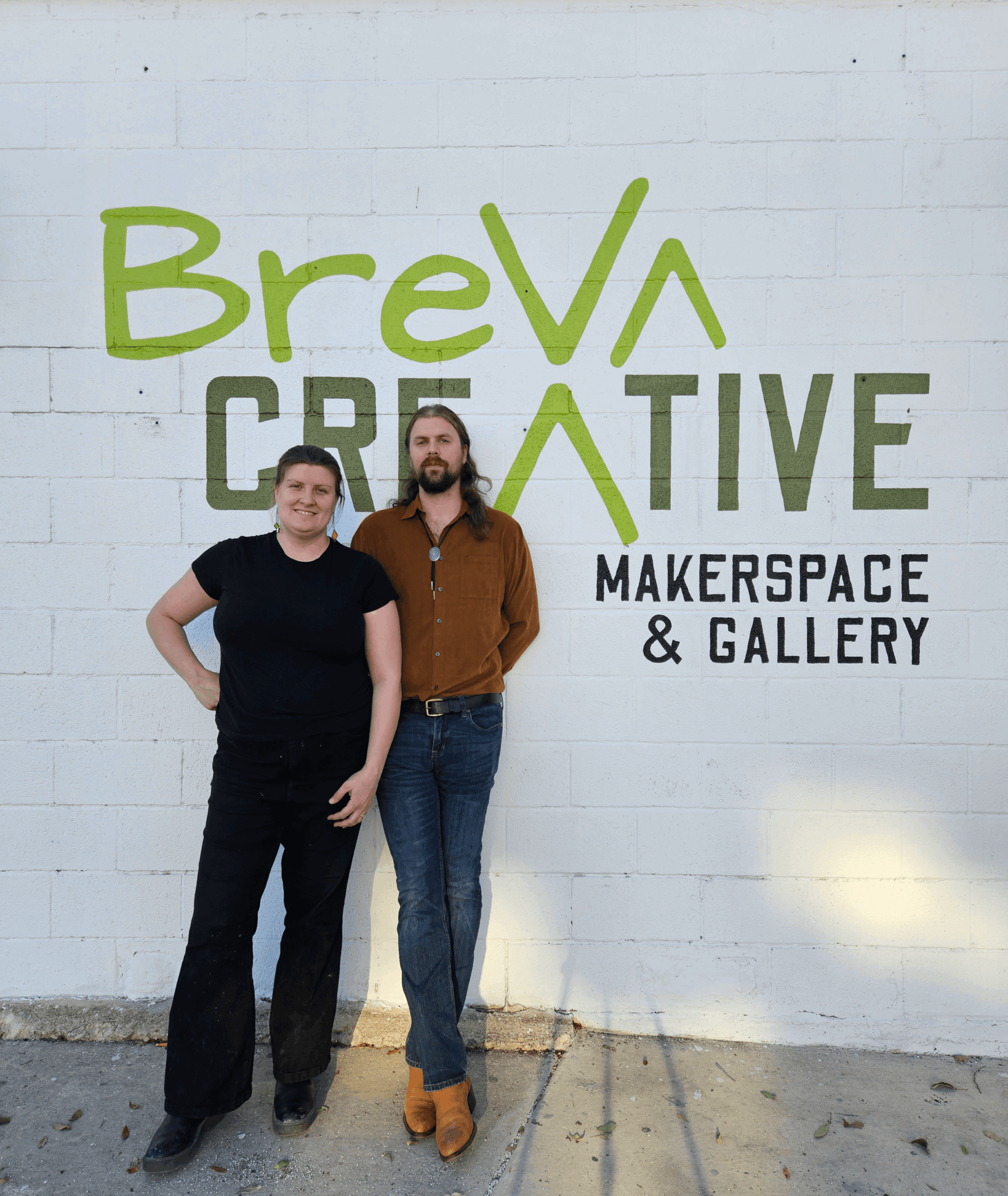Alright – so today we’ve got the honor of introducing you to Brad Schaefer. We think you’ll enjoy our conversation, we’ve shared it below.
Brad, thanks for joining us, excited to have you contributing your stories and insights. How did you come up with the idea for your business?
Studying architecture in college gave both of us an intense desire to create literally everything. When we entered the workforce, we found ourselves quickly disenchanted with the state of creativity within the architecture field. In our evenings and weekends, we would pursue other creative adventures, like screen printing, ceramics, stained glass, gardening, 3D printing, wine-making, and making our own ink from trees. Curiosity quickly consumed us, and we realized quite quickly that we needed more space for our infinite collection of hobbies. The idea of building a makerspace came earlier, but it was around this time when we started to seriously consider it. We wanted to share the joy that we get from making stuff with others. That’s where Breva Creative comes in. We wanted to build a shared space for people to learn, create, and explore.
We knew that San Antonio, TX has a vibrant, growing art community, but most artists that we talked with were stuck with the tools they had at their disposal. Whether they were limited by space or finances, very few artists we knew had access to everything they needed for their artistic passions. We also knew that art education on certain topics was more or less non-existent in San Antonio. For example, very few people or organizations to our knowledge taught stained glass classes in San Antonio. So we fixed that, and stained glass has been one of our top sellers so far. We did a lot of local market research to see what classes were currently being offered, and at what price point, so that we could fit into the gaps of art education that we found in San Antonio.
It took a full two years of prep to build up to the opening of our dream makerspace. We started a Youtube channel to help fuel our creative passions and to start to build a social media presence. It was also during this time that we built our website and our business plan, made feasibility studies, got all our legal documents in order, bought equipment, procured a small business loan and insurance, and found a warehouse to rent. Once we zeroed in on a location, that’s when the fun (and the stress) really began. It took us three months to build out our makerspace. Being the cheapskates that we are, we did absolutely everything we could by ourselves, with the exception of electrical, simply because the city wouldn’t let us. We framed the walls, we built the furniture, we built the cabinets, we stumbled our way through the building permitting process, and we barely slept.
In October 2024 we officially opened our doors. Since then, we’ve been going full steam on marketing and paying the bills. As of now, we have about 25 members and have had lots of successful art classes. We’ve also been doing commissioned work when it comes in. All in all, owning your own small business is daunting. Owning a small business this big is, quite frankly, utterly insane. But even in the hectic moments, and the uncertainty, there’s an unshakable joy, because we know we’re doing exactly what we were meant to do.
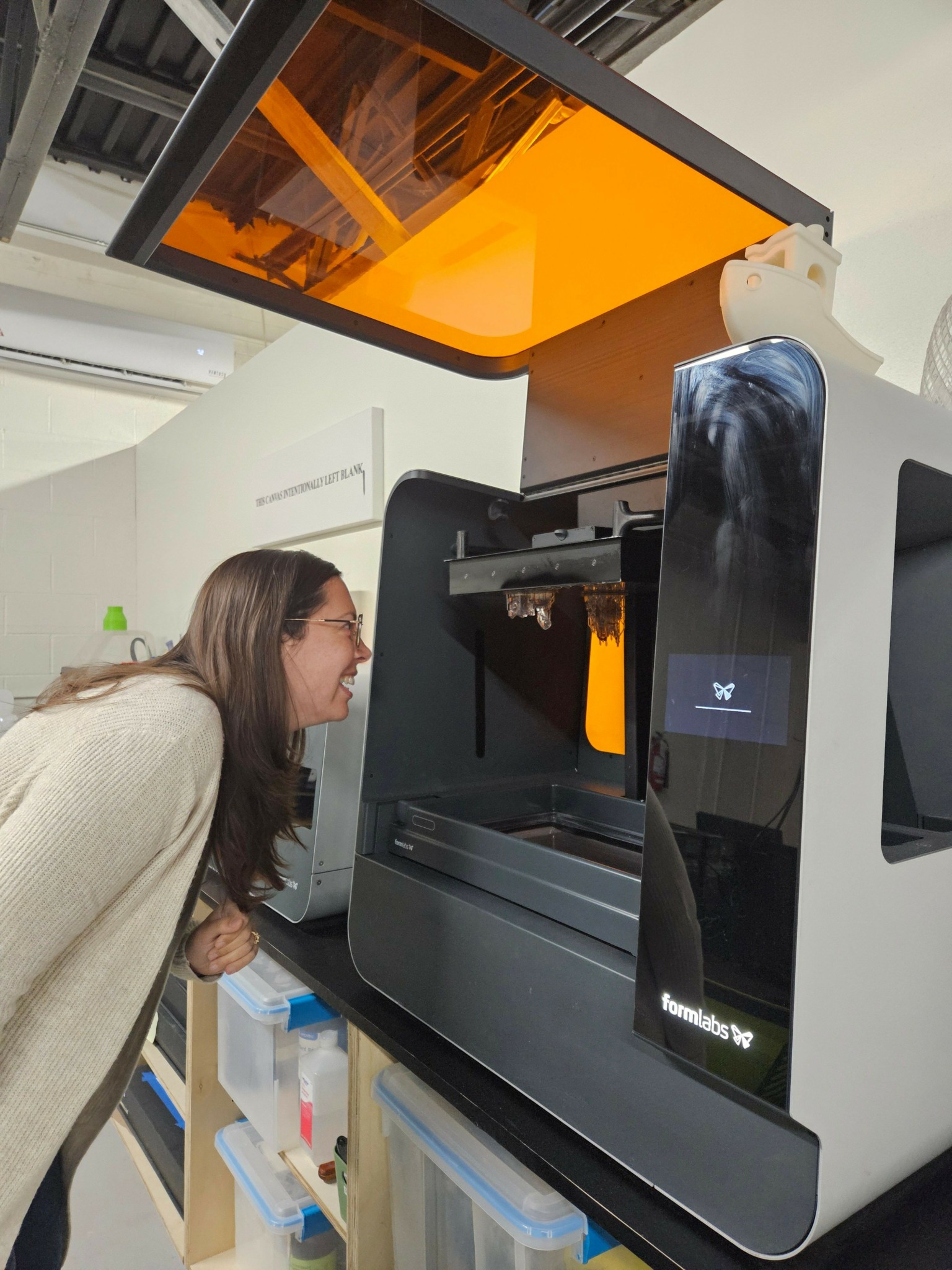
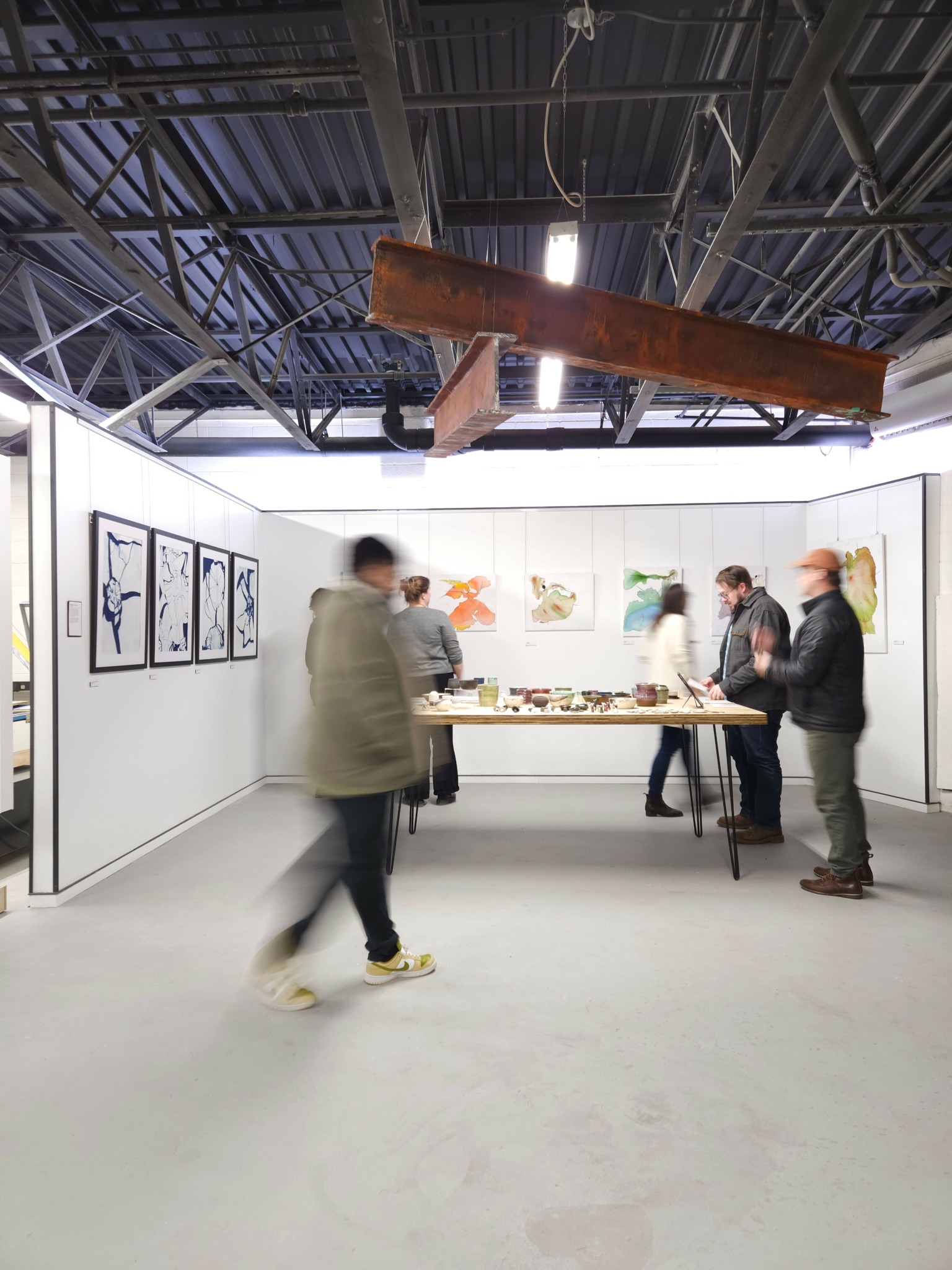
Awesome – so before we get into the rest of our questions, can you briefly introduce yourself to our readers.
We like to describe our space as a fitness gym, but instead of exercising your body, you exercise your mind and your soul through the process of creating. We operate similar to a gym, in that, our members pay a monthly membership fee to use our space and equipment. We have a full woodshop, ceramic studio, print making studio, and digital fabrication lab with 3D printing and laser cutting. We also have a textiles room, a small glass studio, and an upcoming dark room photography room. No matter what you’re interested in making, we probably have a way to make it happen. We also host community art classes on a wide range of topics, and we have an art gallery where we showcase local artists. Makerspaces are absolutely vital in urban areas to help stimulate the local art and entrepreneur communities. Not many artists can afford all the equipment they need for a home studio, let alone have the room for all of it in their home or business. Makerspaces help to fill that much needed gap.
One of our favorite things to see is when people enter our space for the first time and we start explaining what we do, there’s often a moment of realization from them where the commonplace pleasantries of standard conversation like ‘oh that’s nice’ and ‘ok cool’ drift away, and instead there’s a genuine intrigue and you can see on their face the look of ‘woah, this place and this idea is actually really, really cool.’ So many people come in and say that they had no idea places like ours even existed. A lot of people hear the term ‘makerspace’ and have little to no idea what it means, or assume it’s only for established artists and makers and not just hobbyists. We like to say that you don’t have to be an artist in order to be creative. Just because you haven’t done something before, doesn’t mean you can’t or will be bad at it. We encourage our community to step outside of their comfort zones, and learn something new. Often, we have people tour our space and say ‘well this is amazing, but I’m really not the creative type.’ When that happens, we give them a step by step guide of what we would do if we were starting from zero knowledge about all the equipment we offer. We say to make a list of the top 5 things you want to learn how to use in our space. Then dedicate an evening each week to coming in and exploring those things. Week 1, you come in and ask us how to use something, and we walk you through it. Week 2, you come in and try it by yourself on a small project with oversight from us. Week 3, you plan a bigger project that you want to make, and Week 4 is when you build that larger project. In only one month, you’ve now learned the basics of a brand new skill. Then you can repeat that process with the hundreds of skills you can learn in our space, or dive deeper into something that you find that you’re incredibly passionate about.
One of our favorite things to see in our space is cross-pollination between studios. Our ceramics studio typically entertains an older crowd, but when they see that we can 3D print a custom makers mark stamp for the bottom of their mugs, they’re all about it. And people who have never once thought they would be interested in 3D printing or have the opportunity to use one, suddenly know the basic operation of one. One thing we’re quite excited about is using our CNC machine to make custom fonts for our 1890’s era printing press. The blend of old world and new world tech is fascinating to us. There’s no plateau to our creative pursuits, and there are so many things that we have yet to explore. We are incredibly excited for our future as a business, and to continue to bring new classes and new equipment to our makerspace, and build a close-knit community of makers in San Antonio.
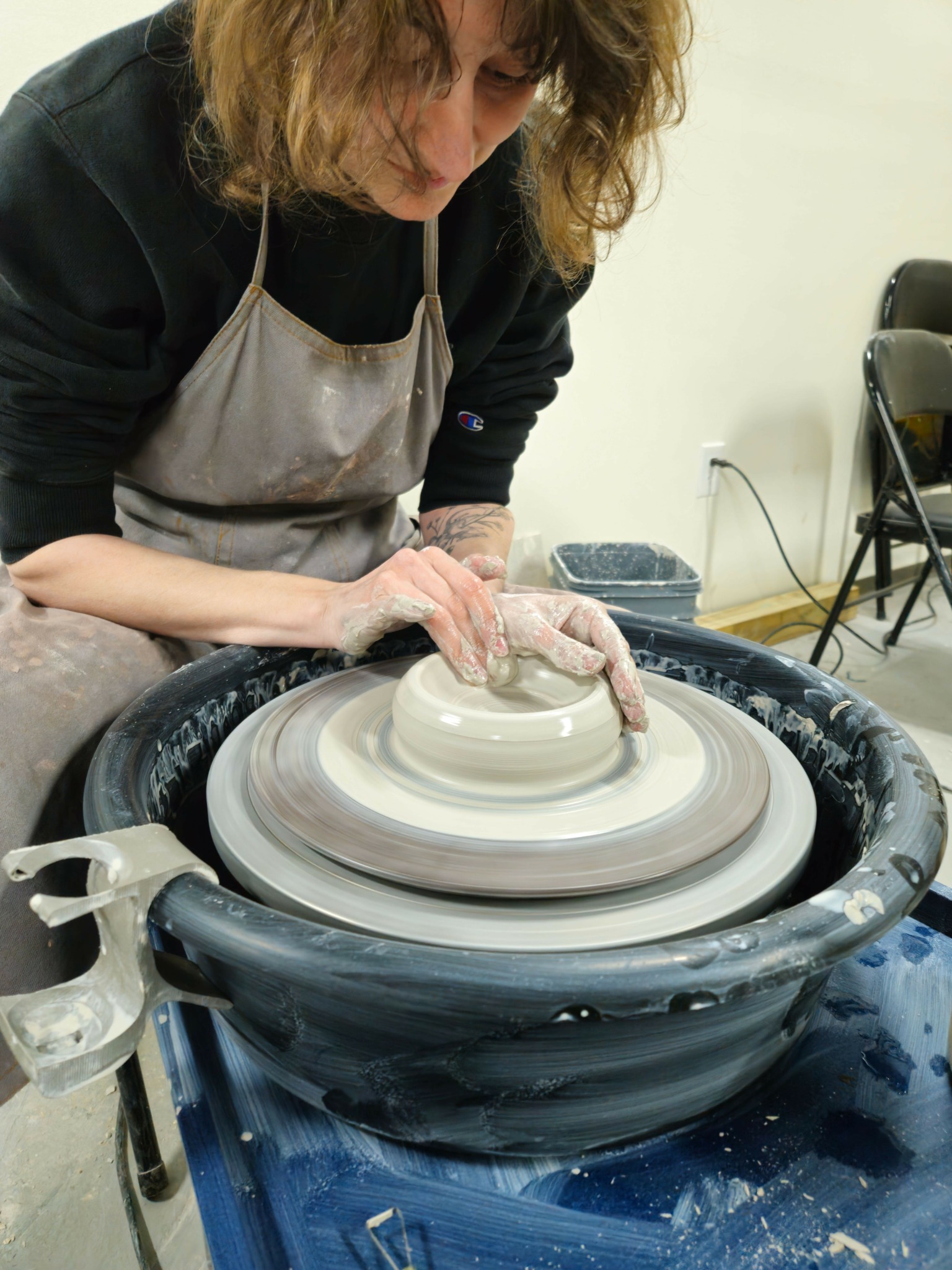
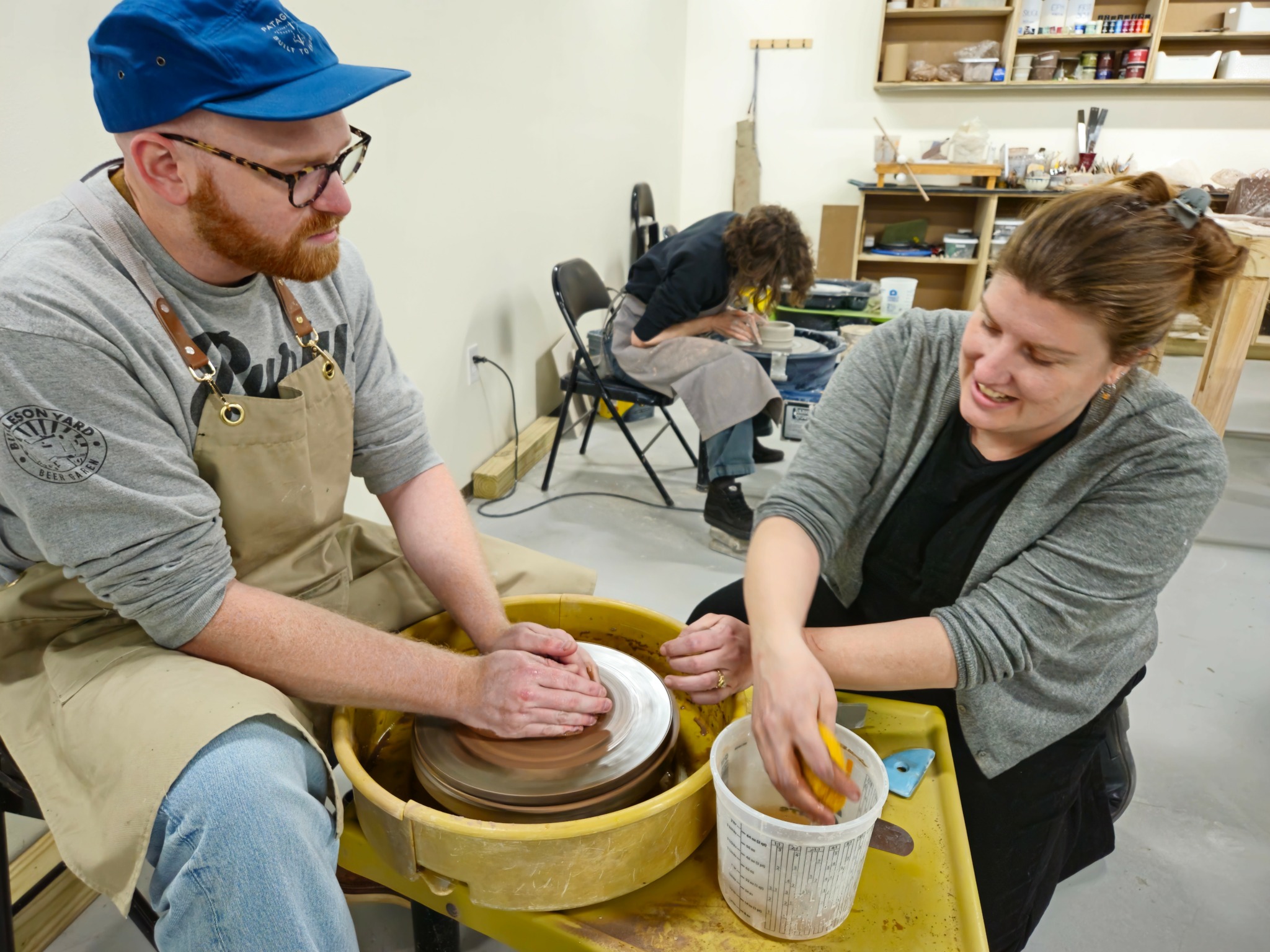
Does your business have multiple or supplementary revenue streams (like a ATM machine at a barbershop, etc)?
Supplementary revenue streams are a big thing for us, and planning for changes to those revenue streams to work with your business plan is really important as well. For example, our two major revenue streams are classes and memberships. Starting out, we know that memberships alone won’t be able to support us, since it takes time to get our name out there and find our membership client base. One-off classes are a lot easier to market, since there’s no monthly commitment, but hosting art classes is one of the furthest things from passive income. They take a lot of work to put together and track. Monthly memberships are a lot easier to track and definitely come closer to a passive income scenario. So as we begin our journey, we’re relying heavily on our classes to carry our revenue projections, and as we increase in membership revenue, we can rely less on hosting time-extensive classes.
Outside of our 2 main revenue streams, we have many more to support our business. First, we have a 3-day pass option where people can test-drive our space to see if they want to buy a monthly membership. These passes help people who are on the fence experience our space. We also have an art gallery where we sell artists’ work on commission, along with some of our own work. We book private lessons if someone wants to learn something specific. We have a kiln that people can book and fire their ceramics in. We apply to small local grants when we thing we have a good shot at being awarded it. On top of all that, we also get a small chunk of revenue through our Youtube channel, Etsy store, Amazon Affiliate links, and side jobs. It’s important to not spread yourself too thin and to set up systems like a Youtube channel that can get you some semi-passive income, instead of accepting every job that comes through the door that takes time away from your real money makers.
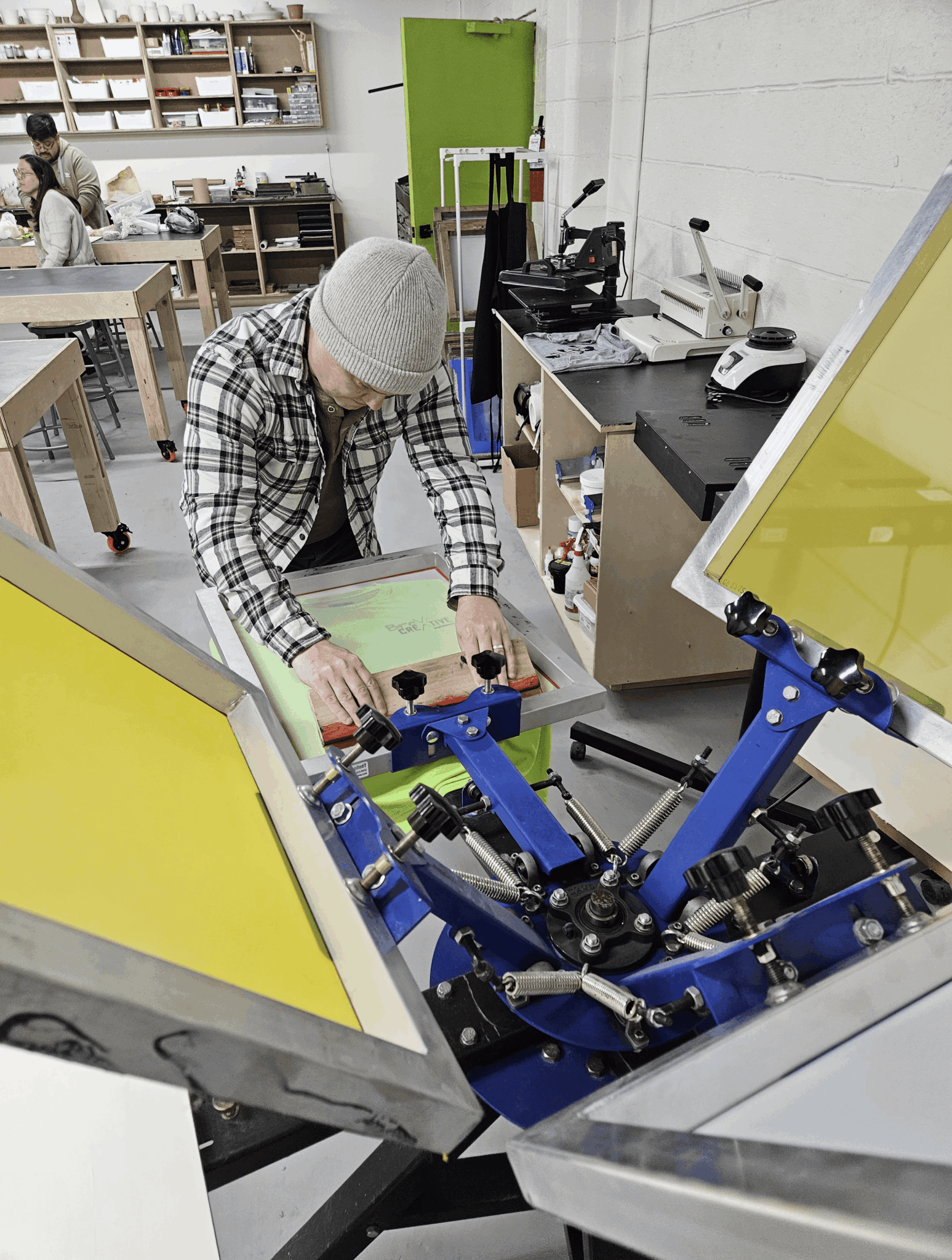
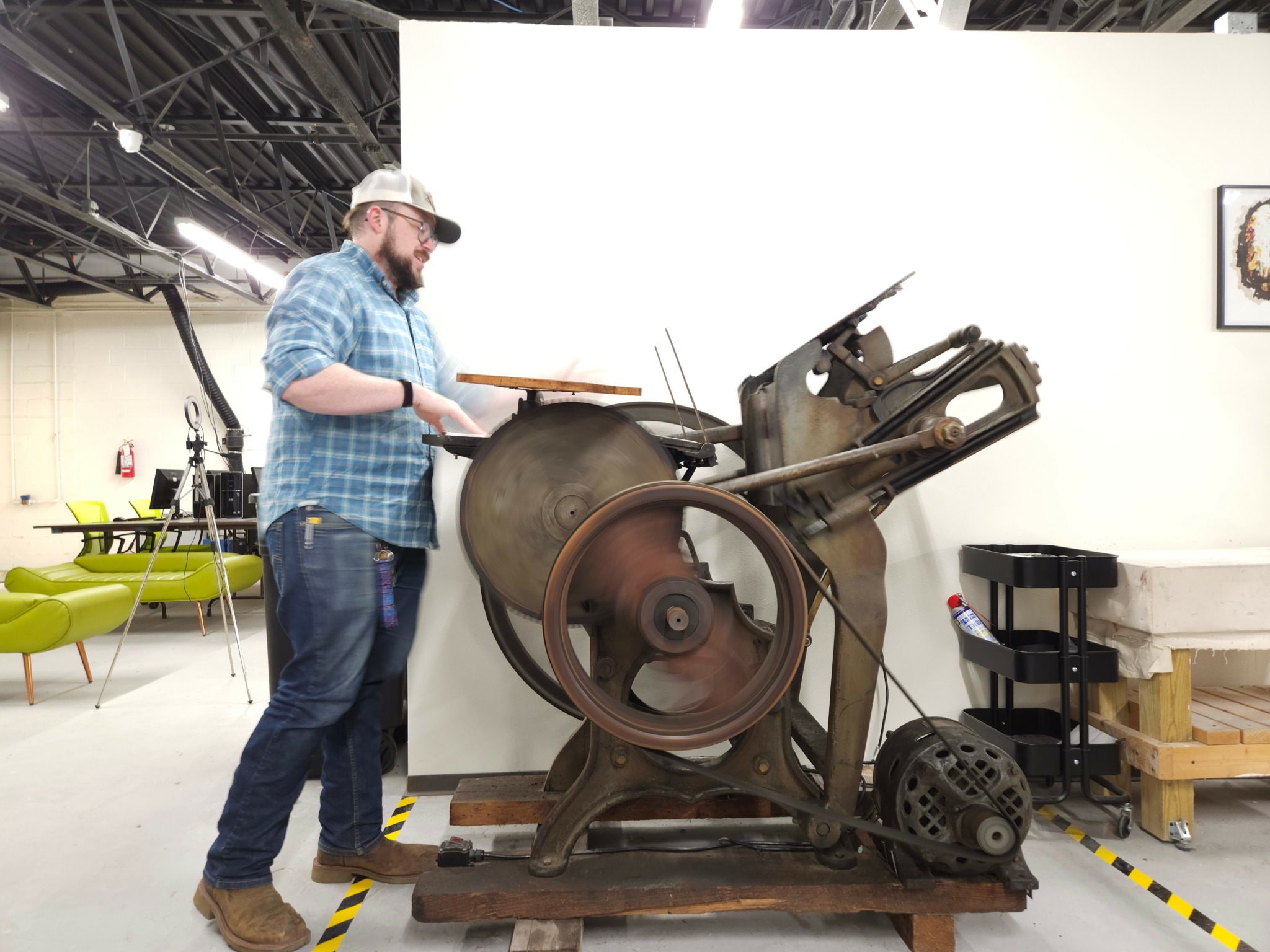
Can you talk to us about how you funded your business?
A makerspace is a daunting business to put together. There is a lot of startup cost that goes into it with all the equipment you need to begin. We needed a full woodshop, ceramic studio, laser cutter, CNC, 3D printers, screen printing studio, and lots more. We started by just being the cheapskates that we naturally are. We both drive vehicles from 2002 that break down here and there, but saves us a ton on insurance and car payments. We are lucky enough to be a dual income household for awhile, and we were able to buy some property with a back house that we rent out that pays for 2/3rds of the mortgage. We lived below our means and were able to save up a good sum for our business.
We also took advantage of deals we found on Facebook Marketplace to buy equipment. I’d say 90% of our equipment, we acquired from Facebook Marketplace, and when we did the math, we found that we were buying our equipment 67% below retail on average. We’ve spent $500 total on 3 pottery wheels, each of which cost anywhere from $1,000 to $2,200 new. We have roughly $80,000 of equipment, that we only paid about $20,000 for, which is actually crazy. We took our time too, because those deals don’t happen every day. We scoured Facebook Marketplace every day for about 2 years, and only bought the equipment if it met certain criteria: price, condition, and usefulness.
Given that we are a makerspace, we decided that our interior space build-out would be done by us, almost exclusively. As architectural designers and in construction adjacent fields, we figured we had enough knowledge to go through city permitting, build walls, hang doors, cabinetry, and furniture. A team of contractors could have most likely done it slightly faster, but it would’ve cost us 4-5x more, which just was not feasible, or smart. Also, based on our knowledge of contractors in the area, the work we did ended up being 4-5x nicer than anything they would’ve been able to deliver for us! We did have to hire electricians to do some work for us, simply because the city wouldn’t let us do it ourselves, which is perfectly understandable. But that electrical work ended up being the majority of the build-out cost for us, which is crazy in relation to how much stuff we were able to do by ourselves.
In the end, we did have to take out a small business loan to cover other startup costs, and to shield our nest egg that we’ve built for ourselves. In total, we’ve probably spent $100,000 on startup including the loan, which seems like a huge number to us, but in reality, for the scale of our business and how much it could’ve cost us, we’ve seen food trucks that take that much to startup, so I think we did pretty well.
Contact Info:
- Website: https://www.brevacreative.com/
- Instagram: https://www.instagram.com/brevacreative
- Facebook: https://www.instagram.com/brevacreative
- Youtube: https://www.youtube.com/@BrevaCreative
- Yelp: https://www.yelp.com/biz/breva-creative-makerspace-san-antonio
- Other: https://www.etsy.com/shop/BrevaCreative
